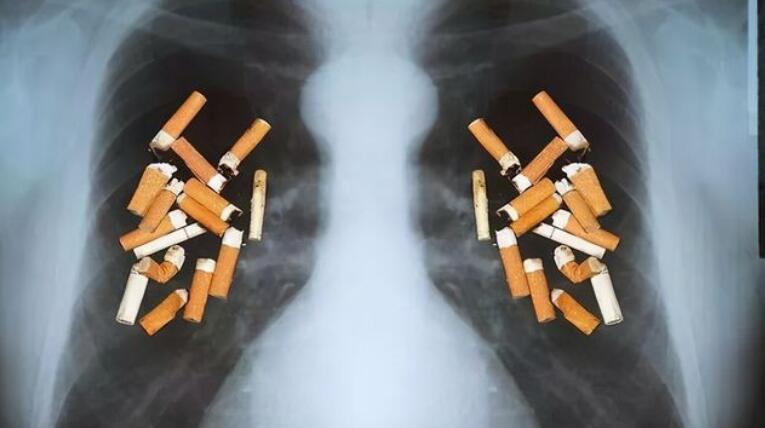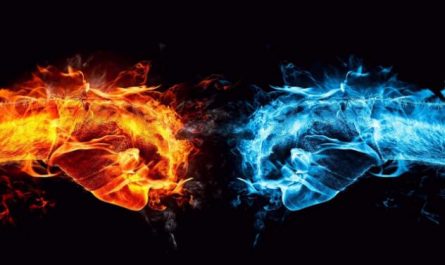In this era of discoloration of radiation, whether mobile phones, microwave ovens, electric cars or signal towers, all challenge people’s nerves. However, what many people don’t know is that if you have to find a place with the strongest radiation in the world, then this place is not in Chernobyl, where the nuclear accident occurred, or in Fukushima, but in the lungs of many old smokers. in.
Seeing this, you may feel very puzzled, but don’t worry, let’s explain the reason.
What exactly is radiation?
To understand this problem, we must first figure out: what exactly is radiation?
In fact, radiation is everywhere, or that everything has radiation. Scientists have long discovered that all objects higher than absolute zero (minus 273·15 degrees) will radiate outwards. According to the third law of thermodynamics in physics: absolute zero cannot be reached. Therefore, we come to a conclusion: everything in the universe is above absolute zero, so everything has radiation.
Take humans as an example. Human body temperature is between 36 and 37 degrees. Humans are radiating outwards all the time. This kind of radiation belongs to infrared light, not visible light, so it cannot be seen by the naked eye, but if infrared is used Night vision can clearly see.
If all radiation is harmful, humans may have been killed by their own radiation long ago. Therefore, not all radiation is hazardous. Scientists divide radiation into two types, one is called ionizing radiation and the other is called non-ionizing radiation.
Among them, non-ionizing radiation is mainly low-energy electromagnetic waves, and no harm has been found clinically. This includes mobile phone radiation, microwave ovens, signal tower radiation and sunlight.
The ionizing radiation is mainly high-energy electromagnetic waves and high-energy particles, which is harmful radiation, and common α rays, β rays and so on.
It can destroy the human body’s macromolecular structure, even genes, and cause cancer or genetic problems.
Ionizing radiation is also widespread. In a small part of sunlight, cosmic rays and radionuclides in the earth’s crust all have ionizing radiation. Not only that, the radon in the rare gas has ionizing radiation, even bananas have ionizing radiation. Therefore, you will find that it is impossible to completely eliminate ionizing radiation.
Why the strongest radiation is the lungs of old smokers?
Talking about toxicity without a dose is a rogue, and the same is true for ionizing radiation. Ionizing radiation is indeed harmful, but it does not mean that it will be harmful if it is exposed to ionizing radiation, but that it will be harmful if it reaches a certain dose. We generally use “Sievert” as the unit of radiation measurement. The potassium 40 in bananas has ionizing radiation. If you eat a banana, the radiation is about 0.1 microsievert. One more thing here, because sieverts are very large units, millisieverts and microsieverts are more commonly used. 1 sievert=1000 millisieverts=100000 microsieverts.
Scientists have found that a single exposure of 100,000 microsieverts may increase the probability of cancer by 4.8%. The amount of radiation contained in bananas is very small, so there is nothing wrong with eating bananas every day.
The safety regulations given by professional national organizations are to minimize exposure to ionizing radiation as much as possible. It is best not to exceed 1,000 microsieverts per year for each person, and for some people in special industries, not to exceed 20,000 microsieverts a year.
There was once a physicist who wanted to know where the radiation is strongest in the world. As a result, he went to many places that he thought might have the strongest radiation.
For example: Hiroshima, where an atomic bomb was once dropped, now the radiation intensity here is 0.3 microsieverts per hour. Another example: Chernobyl, where there was a nuclear accident, and now the radiation intensity here is about 5 microsieverts. As for Fukushima, which has also had a nuclear accident, the radiation here is 10 microsieverts per hour.
It doesn’t seem to be very tall. In fact, he has also been to an abandoned hospital called Pripyat Hospital. At the time of the Chernobyl accident, this firefighter who had taken part in the Chernobyl accident to put out the fire, the firefighting equipment of these firefighters is still in the hospital, and the radiation intensity here can reach 1500 microsieverts.
Is this the place with the strongest radiation in the world?
The answer is obviously not the case. Compared with these, a CT scan of the chest will have 7000 microsieverts. But CT is not the most radiant. Since cigarettes also contain ionizing radiation, these ionizing radiation mainly come from polonium and lead.
Because many smokers smoke a lot of cigarettes every day, this leads to the accumulation of 160,000 microsieverts of radiation in the lungs of smokers every year, which has exceeded safety regulations. Therefore, if you want to find the place with the strongest radiation in the world, it will most likely be the lungs of a certain smoker.
The cigarette itself also contains carcinogens such as nitrosamines, benzopyrene, and tar. Coupled with ionizing radiation, it can be said that cigarettes are probably the man-made objects with the most carcinogens. Therefore, if you cherish life, please stay away from cigarettes.






